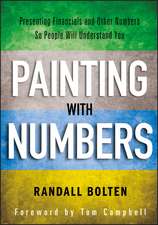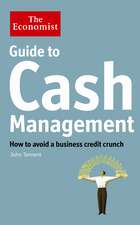Financial Management of Libraries and Information Centers
Autor Robert H. Burgeren Limba Engleză Paperback – 21 aug 2016 – vârsta până la 17 ani
Preț: 443.31 lei
Preț vechi: 574.36 lei
-23% Nou
Puncte Express: 665
Preț estimativ în valută:
84.83€ • 88.79$ • 70.60£
84.83€ • 88.79$ • 70.60£
Carte tipărită la comandă
Livrare economică 31 martie-14 aprilie
Preluare comenzi: 021 569.72.76
Specificații
ISBN-13: 9781440850134
ISBN-10: 1440850135
Pagini: 384
Dimensiuni: 178 x 254 x 20 mm
Greutate: 0.82 kg
Editura: Bloomsbury Publishing
Colecția Libraries Unlimited
Locul publicării:New York, United States
ISBN-10: 1440850135
Pagini: 384
Dimensiuni: 178 x 254 x 20 mm
Greutate: 0.82 kg
Editura: Bloomsbury Publishing
Colecția Libraries Unlimited
Locul publicării:New York, United States
Caracteristici
Offers readers a formal, comprehensive introduction to financial management-not just an aspect such as cost benefit analysis, budgeting, or fundraising
Notă biografică
Robert H. Burger, PhD, is professor emeritus, university library and adjunct professor, School of Information Sciences at the University of Illinois at Urbana-Champaign.
Cuprins
CONTENTSIntroductionSECTION I: FINANCIAL STATEMENTSChapter 1: Financial Management as Information ManagementChapter 2: Novice Financial Management: Your First BudgetChapter 3: Basic Financial StatementsChapter 4: The Accounting Process, or How Financial Statements are ProducedChapter 5: How Governmental Financial Statements Differ from Not-for-Profit and For-Profit Financial StatementsChapter 6: Other Elements of Financial Statements and Financial Statement AnalysisChapter 7: Internal Control and Auditing of Financial Statements SECTION II: BUDGETING Chapter 8: Estimation, Forecasting and Financial Risk ManagementChapter 9: Budgets: General AspectsChapter 10: Budgets: Heuristics, Choice Architectures, and Decision Traps Chapter 11: Capital BudgetingSECTION III: REVENUES Chapter 12: Time Value of MoneyChapter 13: Revenue Sources: Tax RevenueChapter 14: Bonds and Their Role in Revenue for Capital Projects and Other AreasChapter 15: Revenue Sources: Tuition, Grants, Gifts and Fundraising, Fees and Fines SECTION IV: EXPENDITURES Chapter 16: Contract BasicsChapter 17: Expenditures: Personnel Chapter 18: Expenditures: Collections Chapter 19: Expenditures: IT, Facilities, and Other Operating Expenses SECTION V: COST ACCOUNTING IN LIBRARIES Chapter 20: Cost Accounting: General Aspects, Types of Costs, Cost CalculationsChapter 21: Cost Accounting: Role in Measurement and Evaluation of Services Chapter 22: Cost Accounting: Activity Based Costing Chapter 23: Cost Accounting: Differential Costing and Break Even AnalysisSECTION VI: MARKETING AND COMMUNITY TRUST Chapter 24: Marketing, Public Affairs, and DevelopmentChapter 25: Ethics and Financial ManagementSECTION VII: CONCLUSIONChapter 26: ConclusionGlossaryIndex
Recenzii
While Berger's guide is written as a text for a semester-long course, any librarian or information professional who needs to learn about finance, whether in graduate school or working in the field, will find this book beneficial.















